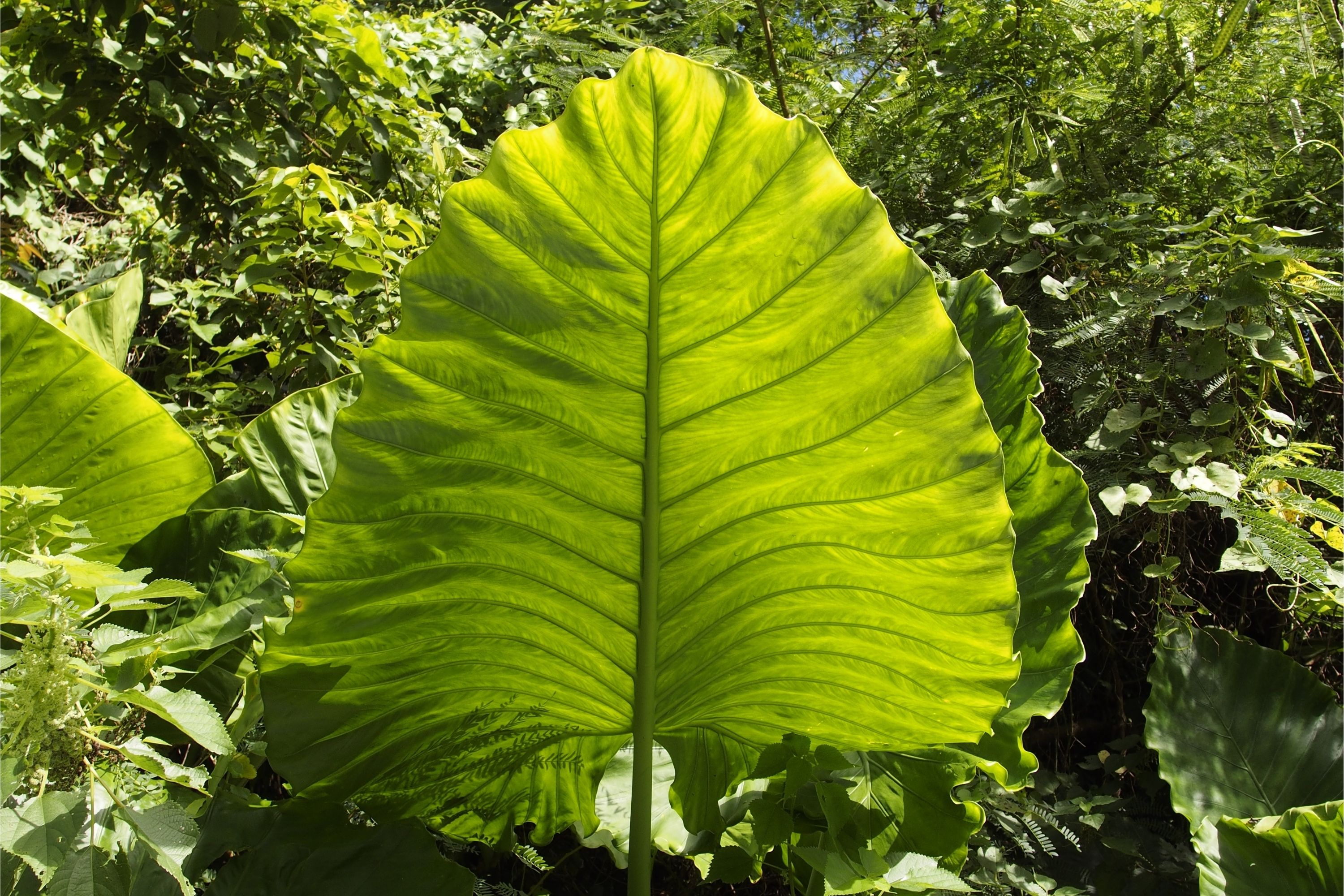Taro
(Alocasia odora)

Description
Alocasia odora (Synonyms: Caladium odorum) also called night-scented lily, Asian taro or giant upright elephant ear) is a flowering plant native to East and Southeast Asia (Japan, China, Indochina, Assam, Bangladesh, Borneo, Taiwan). In Manipur, local name is Hoomu. Alocasia odora (called Ray) can be used as medicine for the treatment of common cold in North Vietnam. The plant is actually inedible when raw because of needle-shaped raphides (calcium oxalate crystals) in the plant cells. In Japan, there are several cases of food poisoning by accidental consumption. The Ministry of Health, Labour and Welfare warned not to eat A. odora (Kuwazuimo), which looks similar to edible Colocasia gigantea (Hasuimo) or Colocasia esculenta (Satoimo). This plant is grows to about 0.5–1.6 m high, with rhizomes of about 4–10 m high and 3–5 cm wide. The leaves are big and blade-shaped, ovate, light green with cordate base. The petioles are 0.3–1.0 m long, with the lower parts clasped around the stem. The plant is a member of the genus Alocasia, and is thus related to taro. Alocasia is a genus of rhizomatous or tuberous, broad-leaved, perennial, flowering plants from the family Araceae. There are about 90 accepted species native to tropical and subtropical Asia and eastern Australia. Around the world, many growers widely cultivate a range of hybrids and cultivars as ornamentals. The large, cordate or sagittate leaves grow to a length of 20 to 90 cm (8 to 35 in) on long petioles. Their araceous flowers grow at the end of a short stalk, but are not conspicuous; often hidden behind the leaf petioles. The corms of some species can be processed to make them edible, however, the raw plants contain raphid or raphide crystals of calcium oxalate along with other irritants (possibly including proteases) that can numb and swell the tongue and pharynx. This can cause difficulty breathing and sharp pain in the throat. Lower parts of the plant contain the highest concentrations of the poison. Prolonged boiling before serving or processing may reduce risk of adverse reactions. Additionally, acidic fruit such as tamarind may dissolve the raphides altogether. It's important to note, however, that this genus varies in toxicity, and can still be dangerous to ingest, even after taking precautions.
Taxonomic tree:







